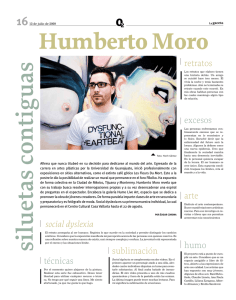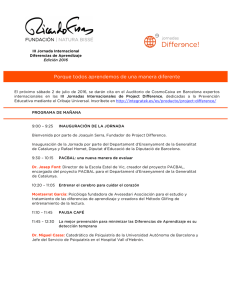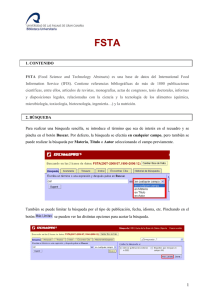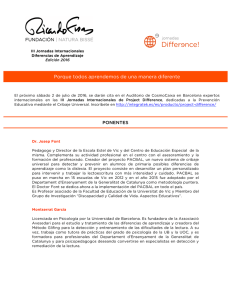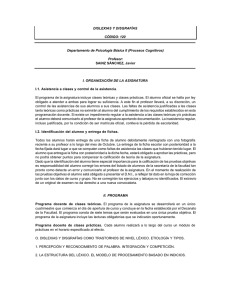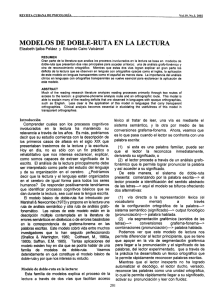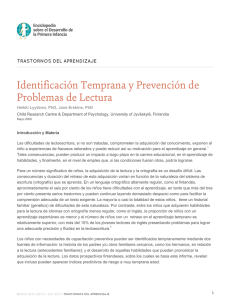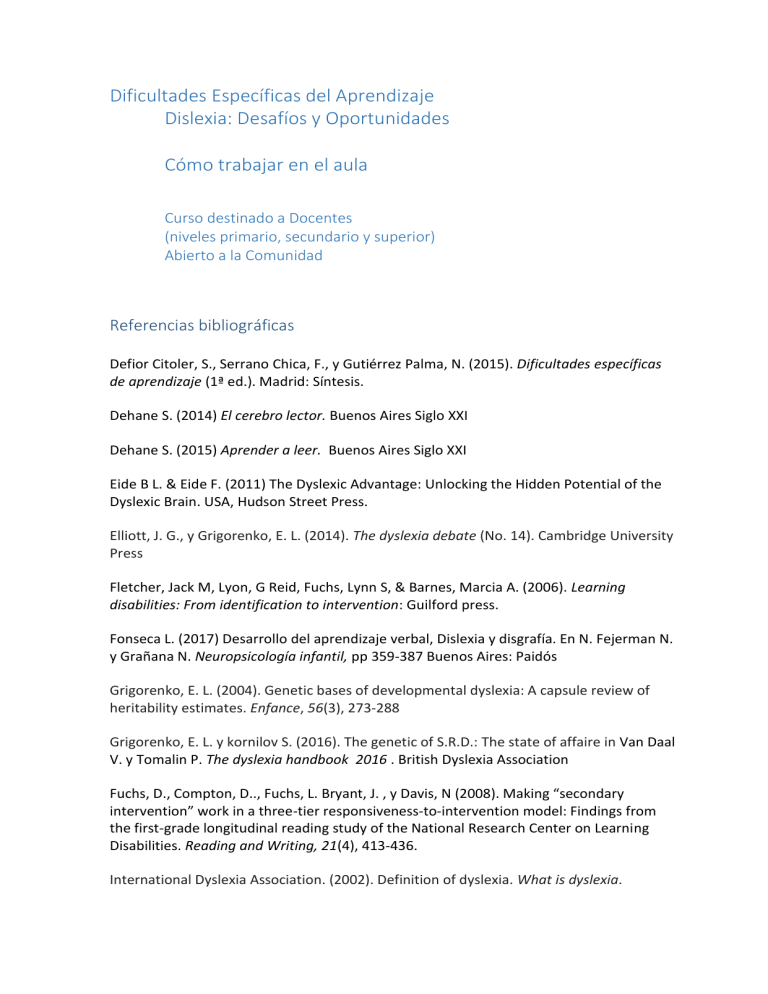
Dificultades Específicas del Aprendizaje Dislexia: Desafíos y Oportunidades Cómo trabajar en el aula Curso destinado a Docentes (niveles primario, secundario y superior) Abierto a la Comunidad Referencias bibliográficas Defior Citoler, S., Serrano Chica, F., y Gutiérrez Palma, N. (2015). Dificultades específicas de aprendizaje (1ª ed.). Madrid: Síntesis. Dehane S. (2014) El cerebro lector. Buenos Aires Siglo XXI Dehane S. (2015) Aprender a leer. Buenos Aires Siglo XXI Eide B L. & Eide F. (2011) The Dyslexic Advantage: Unlocking the Hidden Potential of the Dyslexic Brain. USA, Hudson Street Press. Elliott, J. G., y Grigorenko, E. L. (2014). The dyslexia debate (No. 14). Cambridge University Press Fletcher, Jack M, Lyon, G Reid, Fuchs, Lynn S, & Barnes, Marcia A. (2006). Learning disabilities: From identification to intervention: Guilford press. Fonseca L. (2017) Desarrollo del aprendizaje verbal, Dislexia y disgrafía. En N. Fejerman N. y Grañana N. Neuropsicología infantil, pp 359-387 Buenos Aires: Paidós Grigorenko, E. L. (2004). Genetic bases of developmental dyslexia: A capsule review of heritability estimates. Enfance, 56(3), 273-288 Grigorenko, E. L. y kornilov S. (2016). The genetic of S.R.D.: The state of affaire in Van Daal V. y Tomalin P. The dyslexia handbook 2016 . British Dyslexia Association Fuchs, D., Compton, D.., Fuchs, L. Bryant, J. , y Davis, N (2008). Making “secondary intervention” work in a three-tier responsiveness-to-intervention model: Findings from the first-grade longitudinal reading study of the National Research Center on Learning Disabilities. Reading and Writing, 21(4), 413-436. International Dyslexia Association. (2002). Definition of dyslexia. What is dyslexia. International Dyslexia Association. (2007). Dyslexia basics. Retrieved October, 21, 2007 Radizzani Goñi A. M (2016), Hay un lugar para mí? Los trastornos específicos del aprendizaje en la escolaridad común.Buenos Aires Letra viva Shaywitz, S. E. (2003). Overcoming dyslexia: A new and complete science-based program for reading problems at any level. Knopf. Siegel, L. (2013). Understanding dyslexia and other learning disabilities. Vancouver, BC: Pacific Educational Press. Swanson, H Lee, & Harris, Karen R. (2013). Handbook of learning disabilities: Guilford press. Van Daal V. y Tomalin P. (2016) The dyslexia handbook 2016 British Dyslexia Association Wolf, Maryanne. (2008). Cómo aprendemos a leer. Historia y ciencia del cerebro, y la lectura. Buenos Aires: Ediciones B. Módulo introductorio Defior Citoler, S., Serrano Chica, F., y Gutiérrez Palma, N. (2015). Dificultades específicas de aprendizaje (1ª ed.). Madrid: Síntesis. Dehane S. (2014) El cerebro lector. Buenos Aires Siglo XXI Eide B L. & Eide F. (2011) The Dyslexic Advantage: Unlocking the Hidden Potential of the Dyslexic Brain. USA, Hudson Street Press Elliott, J. G., y Grigorenko, E. L. (2014). The dyslexia debate (No. 14). Cambridge University Press Fabelo, Tony, and James Austin (2004).The Impact of Ignoring Dyslexia and Reading Disabilities in the Criminal Justice System: What We Know and Need to Know , report to the Dyslexia Research Foundation of Texas. Dyslexia Research Foundation of Texas, JFA Associates/The Institute., Apr. 2004. Accessed 24 July 2017. Fletcher, Jack M, Lyon, G Reid, Fuchs, Lynn S, & Barnes, Marcia A. (2006). Learning disabilities: From identification to intervention: Guilford press. Fonseca L. (2017) Desarrollo del aprendizaje verbal, Dislexia y disgrafía. En N. Fejerman N. y Grañana N. Neuropsicología infantil, pp 359-387 Buenos Aires: Paidós Foss B. (2013) The Dyslexia Empowerment Plan: A Blueprint for Renewing Your Child's Confidence and Love of Learning. Ballantine Books Grigorenko, E. L. (2004). Genetic bases of developmental dyslexia: A capsule review of heritability estimates. Enfance, 56(3), 273-288 Grigorenko, E. L. y Kornilov S. (2016). The genetic of S.R.D.: The state of affaire in Van Daal V. y Tomalin P. The dyslexia handbook 2016 . British Dyslexia Association Hewitt-Main J. (2012) Dyslexia Behind Bars: Final Report of a Pioneering Teaching and Mentoring Project at Chelmsford Prison - 4 Years on. Essex, Mentoring 4 U. International Dyslexia Association. (2002). Definition of dyslexia. What is dyslexia. International Dyslexia Association. (2007). Dyslexia basics. Retrieved October, 21, 2007 Logan J. (2009). Dyslexic Entrepreneurs: The Incidence; Their Coping Strategies and Their Business Skills. Dyslexia 15, 4 (2009): 328-46. Moody KC, Holzer CE 3rd, Roman MJ, Paulsen KA, Freeman DH, Haynes M, James TN. (2000) Prevalence of dyslexia among Texas prison inmates. Texas Medicine 2000 Jun; 96(6): 69-75. Nuzzo, R (2016). Biography of Carol W. Greider.” Proceedings of the National Academy of Sciences of the United States of America 102.23 (2005): 8077–8079. PMC. Web. 11 Dec. 2016. Rack, J. (2005). Hidden Disabilities and the Prison Population. Dyslexia Review 2005; 16 (2): 10-22. Rozensztejn R. (2015). Violentados por el desconocimiento: La Dislexia, una problemática invisible. Redes y paradigmas- 2015- N° 9 pp 385- 394 Shaywitz, S. E. (2003). Overcoming dyslexia: A new and complete science-based program for reading problems at any level. Knopf. Random House. Schneps, M., Rose, T., Fischer & Kurt W (2007). Visual Learning and the Brain: Implications for Dyslexia; Mind, Brain, and Education, 1 (3): 128-139, 2007. Blackwell Publishing Inc Schneps, Matthew H.; Brockmole, J. R.; Rose, L. T.; Pomplun, M.; Sonnert, G. & Greenhill, L. J. (2011) Dyslexia Linked to Visual Strengths Useful in Astronomy, Bulletin of the American Astronomical Society, Vol. 43, 2011 Siegel, L. (2013). Understanding dyslexia and other learning disabilities. Vancouver, BC: Pacific Educational Press. Swanson, H Lee, y Harris, Karen R. (2013). Handbook of learning disabilities: Guilford press. von Károlyi C1, Winner E, Gray W, Sherman GF (2013). Dyslexia linked to talent: Global visual- spatial ability. Brain and Language Jun 2013; 85(3): 427-431 Wolf, Maryanne. (2008). Cómo aprendemos a leer. Historia y ciencia del cerebro, y la lectura. Buenos Aires: Ediciones B. Módulo Primaria Defior Citoler, S., Serrano Chica, F., y Gutiérrez Palma, N. (2015). Dificultades específicas de aprendizaje (1ª ed.). Madrid: Síntesis. Dehane S. (2015) Aprender a leer. Buenos Aires Siglo XXI. Fletcher, Jack M, Lyon, G Reid, Fuchs, Lynn S, & Barnes, Marcia A. (2006). Learning disabilities: From identification to intervention: Guilford press. Fonseca L. (2017) Desarrollo del aprendizaje verbal, Dislexia y disgrafía. En N. Fejerman N. y Grañana N. Neuropsicología infantil, pp 359-387 Buenos Aires: Paidós Fuchs, D., Compton, D.., Fuchs, L. Bryant, J. , y Davis, N (2008). Making “secondary intervention” work in a three-tier responsiveness-to-intervention model: Findings from the first-grade longitudinal reading study of the National Research Center on Learning Disabilities. Reading and Writing, 21(4), 413-436. Radizzani Goñi A. M (2016), Hay un lugar para mí? Los trastornos específicos del aprendizaje en la escolaridad común.Buenos Aires Letra viva Shaywitz, S. E. (2003). Overcoming dyslexia: A new and complete science-based program for reading problems at any level. Knopf. Siegel, L. (2013). Understanding dyslexia and other learning disabilities. Vancouver, BC: Pacific Educational Press. Swanson, H Lee, & Harris, Karen R. (2013). Handbook of learning disabilities: Guilford press. Wolf, Maryanne. (2008). Cómo aprendemos a leer. Historia y ciencia del cerebro, y la.lectura. Buenos Aires: Ediciones B. Las Dificultades Específicas del Aprendizaje en la escuela media Eide B L. & Eide F. (2011). The Dyslexic Advantage: Unlocking the Hidden Potential of the Dyslexic Brain. USA, Hudson Street Press. Fonseca L. (2017) Desarrollo del aprendizaje verbal, Dislexia y disgrafía. En N. Fejerman N. y Grañana N. Neuropsicología infantil, pp 359-387 Buenos Aires: Paidós Radizzani Goñi A. M (2016), Hay un lugar para mí? Los trastornos específicos del aprendizaje en la escolaridad común.Buenos Aires Letra viva Shaywitz, S. E. (2003). Overcoming dyslexia: A new and complete science-based program for reading problems at any level. Knopf. Siegel, L. (2013). Understanding dyslexia and other learning disabilities. Vancouver, BC: Pacific Educational Press. El joven con DEA frente a su formación profesional Beetham J. (2016) Dyslexia friendly workplace Van Daal V. y Tomalin P. The dyslexia handbook 2016 British Dyslexia Association Dyslexia Action. Creating a dyslexia friendly workplace Accessed 8 July 2017. Eide B L. & Eide F. (2011). The Dyslexic Advantage: Unlocking the Hidden Potential of the Dyslexic Brain. USA, Hudson Street Press. Kindersly K. (2016) Dyslexia in the workplace: Awareness and adjustments are essential. Van Daal V. y Tomalin P. The dyslexia handbook 2016 British Dyslexia Association MacCullagh, L., Bosanquet, A., and Badcock, N. A. (2017) University Students with Dyslexia: A Qualitative Exploratory Study of Learning Practices, Challenges and Strategies. Dyslexia, 23: 3–23. Radizzani Goñi A. M (2016), Hay un lugar para mí? Los trastornos específicos del aprendizaje en la escolaridad común.Buenos Aires Letra viva Reid Rebecca (2016) What it's like having dyslexia in the workplace - and how you can help. The Telegraph 11 feb 2016. Accessed 8 July 2017. Shaywitz, S. E. (2003). Overcoming dyslexia: A new and complete science-based program for reading problems at any level. Knopf. Siegel, L. (2013). Understanding dyslexia and other learning disabilities. Vancouver, BC: Pacific Educational Press. The Codpast, “Dyslexics Know Your Rights! | Reasonable Adjustments Explained.”. Accessed 7 July 2017. Van Daal V. y Tomalin P. (2016) The dyslexia handbook 2016 British Dyslexia Association Nuevas Tecnologías – Nuevas oportunidades Lindeblad E., Nilsson S et al (2017). Assistive technology as reading interventions for children with reading impairments with a one-year follow-up. Disability and Rehabilitation: Assistive Technology Vol. 12 , Iss. 7,2017 Rello L., Pielot M & Marcos MC. (2016). Make It Big! The Effect of Font Size and Line Spacing on Online Readability. CHI ’16: ACM SIGCHI Conference on Human Factors in Computing Systems. San Jose, CA, May 7-12. Rello, Luz & Ricardo Baeza-Yates (2015). How to Present more Readable Text for People with Dyslexia. An eye-tracking study on text colors, size and spacings. Universal Access in the Information Society (UAIS) Rello, Luz & Ricardo Baeza-Yates (2013). Good Fonts for Dyslexia.. ASSETS 2013: The 15th International ACM SIGACCESS Conference of Computers and Accessibility, Bellevue, Washington USA, 22-24 October.
